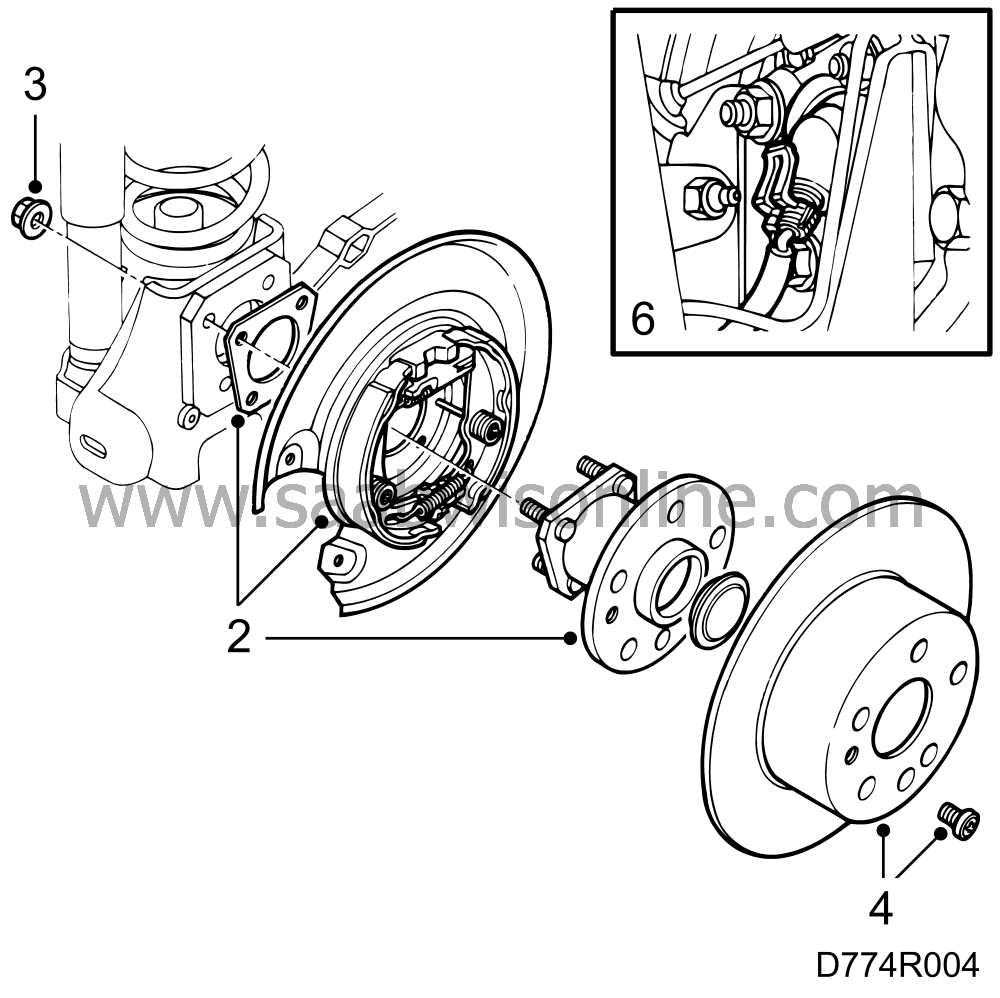Rear-wheel hubs
| Rear-wheel hubs |
| 1. |
Raise the car and remove the
wheel.
|
|
| 2. |
Press back the brake pistons, using a pair of slip-joint pliers.
|
|
| 3. |
Remove the two brake caliper retaining bolts. If necessary, also undo
the pipe connection. Use a cable tie to suspend the brake caliper out of
the way.
|
|
| 4. |
Back off the adjusting screw for the brake shoes.
|
|
| 5. |
Remove the lever's return spring.
|
|
| 6. |
Disconnect the handbrake cable from the lever.
|
|
| 7. |
Remove the brake disc retaining bolts. Remove the brake disc.
|
|
| 8. |
Unplug the connector for the speed sensor.
|
|
| 9. |
Remove the wheel hub's four retaining bolts.
|
|
| 10. |
Remove the wheel hub, back plate and spacer. Separate the wheel hub from the
back plate.
|
|
| To fit |

| 1. |
Clean the contact surfaces by
means of a wire brush.
|
|
| 2. |
Place the back plate on the wheel hub and spacer.
|
|
| 3. |
Fit the back plate and spacer. Fit new wheel-hub nuts.
Tightening torques: 50 Nm +(30°-45°) (36.9 lbf ft +(30°- 45°)). |
|
| 4. |
Mount the brake disc on the hub and fit the locking screw, securing it with Loctite
or the like.
|
|
| 5. |
Attach the handbrake cable to the lever.
|
|
| 6. |
Fit the return spring on the lever and plug in the speed sensor
connector.
|
|
| 7. |
Position the brake caliper and fit the retaining bolts, securing them with Loctite or
the like.
|
|
| 8. |
Screw in the adjusting nut for the brake shoes through the hole in the
disc until the disc is prevented from rotating.
|
|
| 9. |
Back off the adjusting nut until the brake disc is just free to rotate.
|
|
| 10. |
Fit the wheel and lower the car to the floor. Tighten the wheel bolts.
Tightening torques: 105-130 Nm (78-96 lbf ft) light alloy wheel 90-105 Nm (67-78 lbf ft) pressed steel wheel |
|



